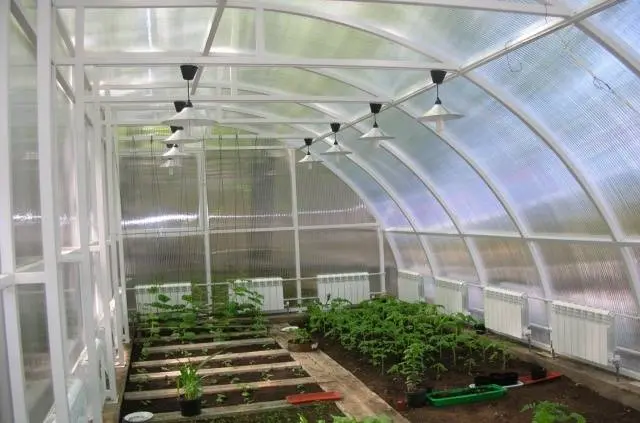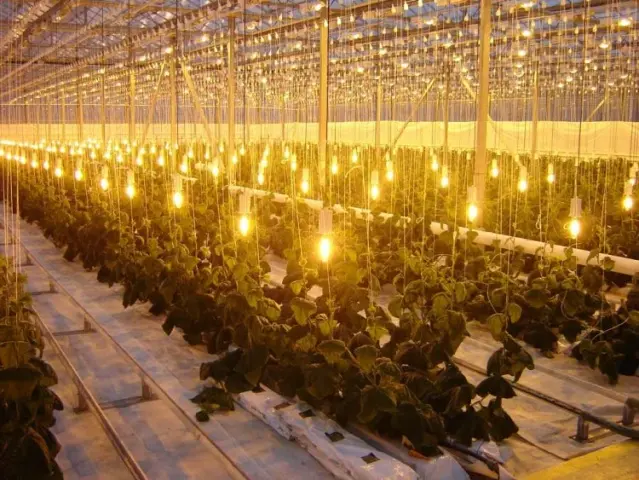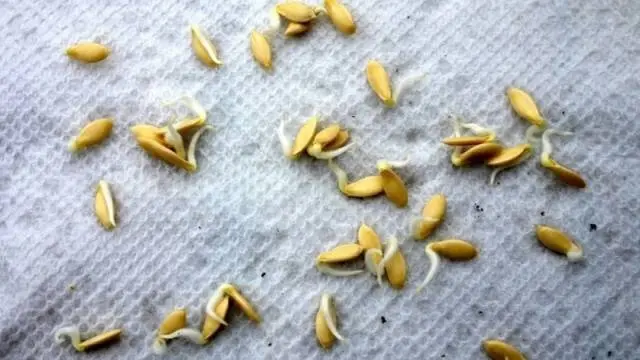Growing cucumbers in a greenhouse in winter makes it possible not only to provide the family with vitamins, but also to establish their own promising business. Significant funds will have to be spent on the construction of the shelter, but the fruiting process can become continuous. To make the harvest happy, choose the right varieties and properly care for the plantings.

Selecting the ideal indoor variety
Growing cucumbers in a winter greenhouse is a complex process, the success of which depends on many details. One of them is choosing the right variety. It is advisable to opt for first-generation hybrids. Compared to classic varieties, they are more hardy, have a high yield and are less susceptible to diseases. The only negative is the impossibility of self-collection of seeds. They ripen, but do not guarantee the full range of qualities of the mother plant.
Numerous manuals for gardeners will help you understand how to grow cucumbers in the winter in a greenhouse. In them you can find recommendations for choosing varieties for specific climatic zones. It is important to purchase cucumber seeds that do not need pollination. Hybrids of Polish, Dutch, as well as domestic selection have proven themselves to be excellent.
In the greenhouse, you can grow fruits suitable for salads or pickling. Lettuce hybrids include the following:
- Anyuta;
- Atdet;
- Vincent;
- White angel;
- Orlik;
- Roast;
- Masha;
- Royal;
- Fawn.
These cucumbers are lighter in color and have white spines. Popular salad hybrids include short-fruited hybrids German, Cheetah, Amur, Orpheus. They are distinguished by a darker fruit color, black spines and a fairly dense peel.

cucumber greenhouse
A winter greenhouse is a capital structure that differs significantly from an ordinary summer greenhouse. It should provide the plants with an ideal microclimate, regardless of the temperature outside. The greenhouse is built on a solid cinder block frame, which needs to be deepened by about 0,5 m. It is best to make it single-pitched: this shape of the roof does not allow snow to linger and provides optimal insolation. Greenhouses on a metal frame, covered with sheets of cellular polycarbonate, are distinguished by particularly high strength. One wall should be made deaf by laying it out with logs or cinder blocks. It will protect the landing from the cold wind and help save on heating.

The winter greenhouse is equipped with double doors with a vestibule that protects plants from cold air currents. Ventilation windows and curtains are needed for shading in sunny weather. For lighting under the ceiling, powerful fluorescent lamps are strengthened.

Plants can be planted in the ground or on multi-tiered racks. Hydroponic technology is best not to use. Cucumber grown in a nutrient solution becomes tasteless and watery and loses flavor.
When deciding how to grow cucumbers in a greenhouse in winter, consider the issue of heating in advance. For normal life, plants need a constant temperature of at least 23 ° C. The easiest way to organize a water boiler with pipes laid across the floor. However, this design has a drawback – high heating costs. Combining water heating with wood-burning stoves or bonfires will help save money. It will reduce costs and insulate the structure with roofing material. The sheets are laid out outside along the entire perimeter of the greenhouse on the ground cleared of snow. Another way to economically heat greenhouses is to use biofuels. Chopped straw is mixed with cow or horse manure, stacked in heaps and covered with a film. The rotted mixture is laid out on prepared beds and covered with a layer of fertile soil. Such fuel maintains a stable temperature and additionally fertilizes the soil.
vegetable care
Cucumbers are best grown in seedlings. The seeds are sorted out, treated with a solution of potassium permanganate, wrapped in linen and placed in a saucer with warm water. When sprouts appear, the seeds are placed in pre-prepared cups made of peat, plastic or paper.

Planting in individual containers avoids traumatic picking and preserves the fragile root system of seedlings. They are kept in a warm, well-lit place, watered daily with warm settled water.
For planting, a light nutrient mixture is used from garden or soddy soil with humus and a small amount of washed river sand. The same mixture is laid out in greenhouse beds. Seedlings are moved into the shelter when 2-3 pairs of true leaves unfold on them. Before planting, the soil is shed with a hot solution of copper sulfate or potassium permanganate, cooled and mixed with wood ash and complex mineral fertilizers. Plants are placed at a distance of 35-40 cm from each other, wide aisles are required to facilitate planting care.
The technology for growing cucumbers in winter provides for a consistently high temperature and humidity of at least 85%.
With insufficient watering, the fruits become bitter and small, the yield is greatly reduced. Planting should be watered with warm water at least 3 times a week. You can ventilate the greenhouse only in the off-season; in the cold, the windows do not open. Immediately after transplantation, young plants are tied to rope supports.
Indoors, cucumbers require frequent feeding. Ammonium nitrate, superphosphate, potassium chloride are added to the soil weekly. Those who prefer organic fertilizers can water the plants with an aqueous solution of mullein or bird droppings. After feeding, rinse the stems with clean water to avoid burns.
Fruiting time depends on the variety. Hybrids with an extended fruit ripening period are often planted in the greenhouse, allowing you to harvest for several months. Don’t let the cucumbers overripe: they will become tough, dry, and less tasty.
Growing vegetables indoors is realistic even for winter time. Heat-loving cucumbers that ripen in December or January are a real miracle that is quite possible to create with your own hands.









